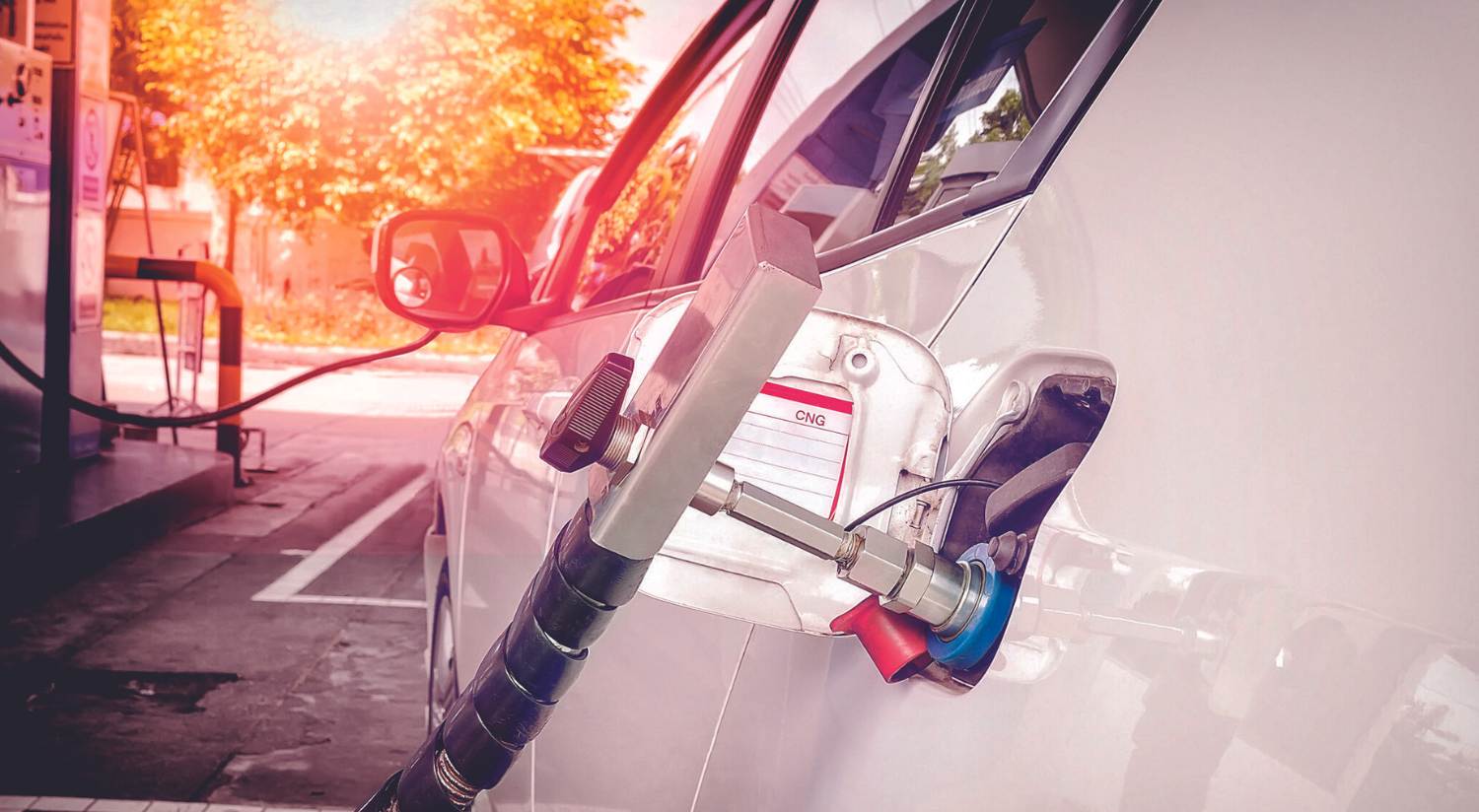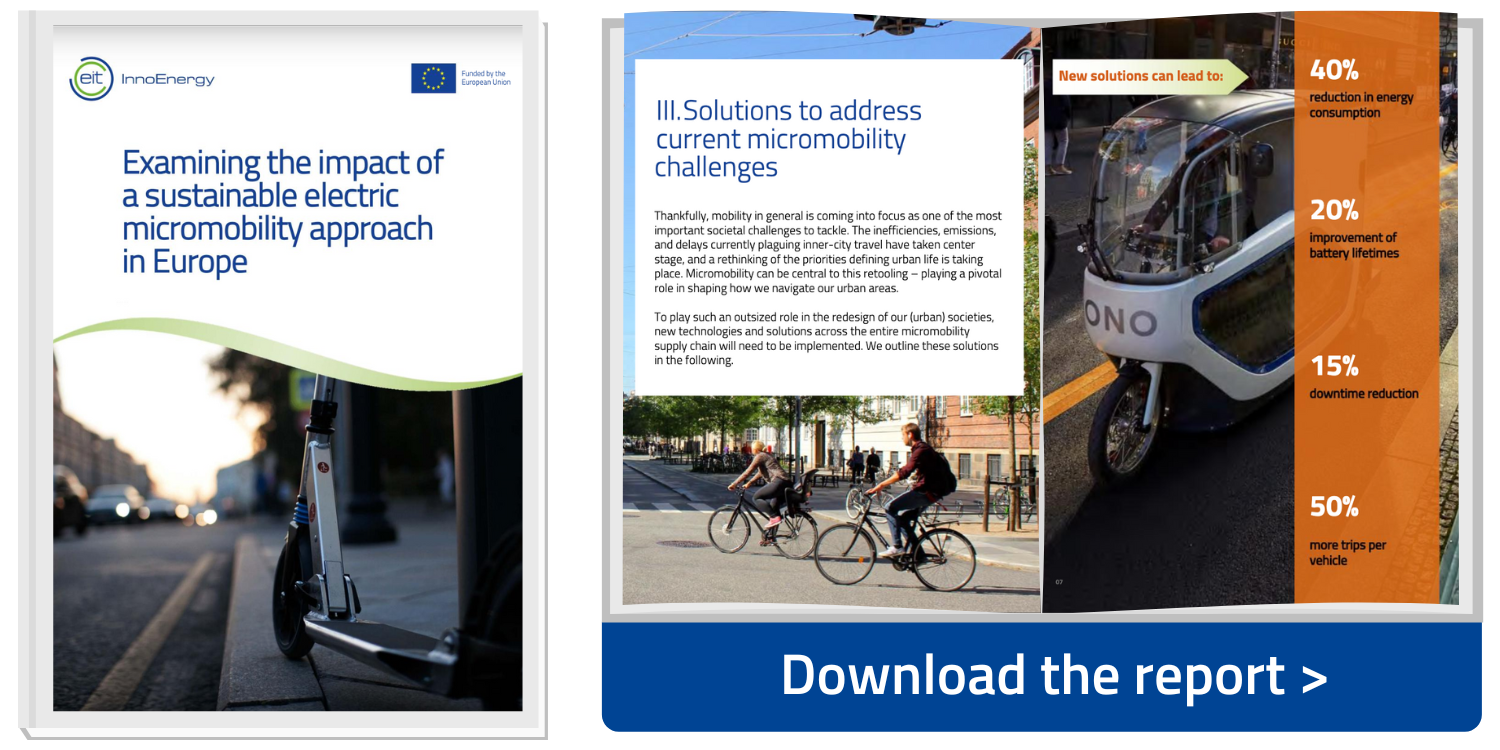Suffering From EV Range Anxiety? Better Start Looking For Another Phobia.

This article was written by Jennifer Dungs, EIT InnoEnergy Thematic Leader, Energy for Transport and Mobility, and was initially published on Forbes.com.
Electric vehicle ‘range anxiety’
Imagine being on the road in your electric car – say, during morning rush hour – when suddenly the charge status is heading quickly toward 0% and no fast-charging station nearby. Who has time for a 20-minute stop on the way to work, anyway? Add dropping kids off at school to the equation and you have the perfect storm. It is scenarios like this, nightmares really, that have haunted many (or even most) people considering buying or regularly using an electric vehicle (EV).
This understandable fear, commonly referred to as “range anxiety,” has long been one of the fundamental roadblocks preventing EVs from breaking into the mass market.
Here’s the good news: enormous progress has been and continues to be made on two fronts. The financial commitment to develop a dense network of public and private charging stations, and initial build-up in this direction, promises to provide EV drivers with the infrastructure they need. And more and more fully electric cars are being rolled out with powerful batteries that match the range of the gas-powered cars they are looking to replace.
Charging infrastructure currently determines who can drive EVs
Let’s look at the infrastructure first. The European Union, based on its “Fit-for-55” package, plans to achieve a 55% CO2 reduction across all sectors by 2030. For transport, this translates to about 42.8 million electric cars on the streets by then (BEVs and PHEVs). Or in other words: 75% of new car sales in Europe are predicted to be EVs by the end of the decade. To support this growth, 6.8 million public chargers will be required. On average, this means about 14,000 public charging points need to be deployed each week from now until 2030. Deployment is not yet at these levels, but acceleration plans are being developed.
Unsurprisingly, most of the charging today, still takes place at home. In fact, 90% of US electric car owners have their own garage. In Europe that number is roughly 70%. The advantage of home charging is that the car can be plugged in for 10+ hours (typically overnight) and the process does not take up any of the owner’s time. The installation cost is also improving, with a slow charger (7-22 kW) costing roughly $1,000 to $2,000, versus ~$60,000 for a fast charger (150 kW) or ~$150,000 for an ultra-fast charger (350 kW). Globally, slow chargers dominate and will continue to do so, representing 69% of all installations. If these are well-designed, a high proportion of electric car drivers will be able to charge at home or work, relieving initial pressure on the public infrastructure.
Urban-suburban divide will be bridged by ubiquitous “seamless” charging stations
Much of the data today is coming from early adopters of this technology. When electric cars become mainstream, however, the questions about infrastructure will be more complex. Where will urban drivers charge their vehicles, or people without dedicated parking spots at home? In Germany, for instance, more than 50% of the population live in apartments, many without built-in parking. While public curb-side charging is an option, it still faces several challenges, such as spots being blocked by gasoline-powered cars, slow charging times (3-8 hrs), and no way to reserve a spot. Fortunately, new concepts are popping up, such as charging at parking lots or retail/shopping centres.
Mike Battaglia, SVP of sales and business development at Blink Charging, recently talked about the important role of commercial retail locations where people can “seamlessly charge their vehicle while enjoying nearby amenities, like shopping at local businesses and/or eating at restaurants.” Again, it is about convenience. If you plan to be out somewhere for a period of time – working, shopping, or dining – why not charge the car?
Normal chargers (7-22 kW) will compose the majority (~70%) of charging points. According to Bloomberg Insights, perhaps surprisingly, energy demand from fast chargers could reach as high as 43% in 2040. The various use cases for fast chargers are still developing, although the need is clear. The number of fast and ultra-fast charger installations is increasing about 93% year-over-year. The primary use-case is along the highway to serve long-distance trips. But retailers and restaurants in the US are also considering, or in some cases already installing this technology, including places like McDonalds, Walmart, and Whole Foods. For such businesses, a mix of both normal chargers and fast chargers will likely help increase traffic and store profitability. Additionally, these new options will encourage drivers to change their charging behaviour, enabling not just the all-night or all-day slow charging but also topping up.
Thankfully, this initiative is being tackled by more than just one group of stakeholders. Several major vehicle manufacturers (OEMs) have also made impressive announcements on their plans to support the charging infrastructure rollout, including the commitment of billions of dollars to joint ventures and community initiatives. VW will invest 400M€ to build 18,000 ultra-fast chargers in Europe, 10,000 ultra-fast chargers with Electrify America in the US, as well as 17,000 in China by 2025. TeslaTSLA +1.7% plans to triple their supercharger network globally by the end of next year. GM will spend $750M on charging infrastructure by 2025. However, there are still some risks that need to be managed to realize these commitments which include securing the necessary permits (in a timely manner), upgrading the grid (where needed), and prioritizing the upskilling of technicians.
Prioritizing driver convenience, EV manufacturers are removing range limitations
OEMs have made huge leaps forward in addressing the other main point of user concern, the limitation of electric car range. For 10 years, the Tesla Model S topped the list for longest range electric car with 647 km (405 miles). In early 2022, the Mercedes EQS knocked Tesla out of the top spot with a maximum potential range of 784 km (453 miles) and an impressive 31-minute charging time to get from 10% to 80% charged. This was followed, on April 14, by Mercedes CEO Ola Kaellenius proudly announcing on LinkedIn that their new VISION EQXX prototype had broken the 1,000 kilometres “range barrier” with a single-charge road trip from Sindelfingen in Germany to the Cote D’Azur in Southern France. A test of the Porsche Taycan performed by Tom Moloughney showed, further, that that vehicle can charge from 5% to 80% in only 21 minutes. And recently Giovanni Palazzo, President and CEO of Electrify America, spoke about a 5- to 10-minute charging time: “With 800-volt architectures becoming more common in EVs, five-minute charge-ups may be a reality soon.”
The time has come to retire any EV hesitance
With a well-designed charging infrastructure that serves new driver behaviour, like filling up while out and about, both urban apartment dwellers and homeowners will have a variety of convenient options to keep their EVs charged. As we move towards a model where charging is made nearly ubiquitous, keeping an electric vehicle running will become more convenient than making regular trips to the gas station.
It’s funny how the narrative can change so quickly on range anxiety: if today’s infrastructure plans continue to be implemented and manufacturers keep expanding EV battery range and performance along with faster charging options, it will be time for drivers to retire any EV hesitance they still have. With range anxiety a thing of the past, people will have to find something new to worry about!
Explore the challenges facing electric micromobility today as well as possible solutions for a sustainable and coherent micromobility approach in Europe. Download the report ‘Examining the impact of a sustainable electric micromobility approach in Europe’.


